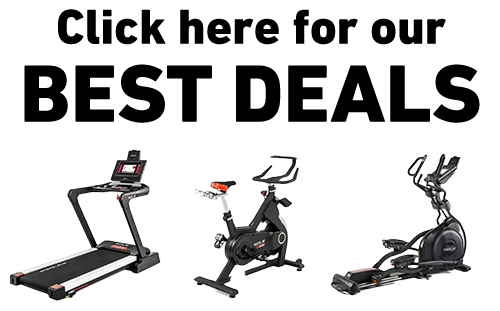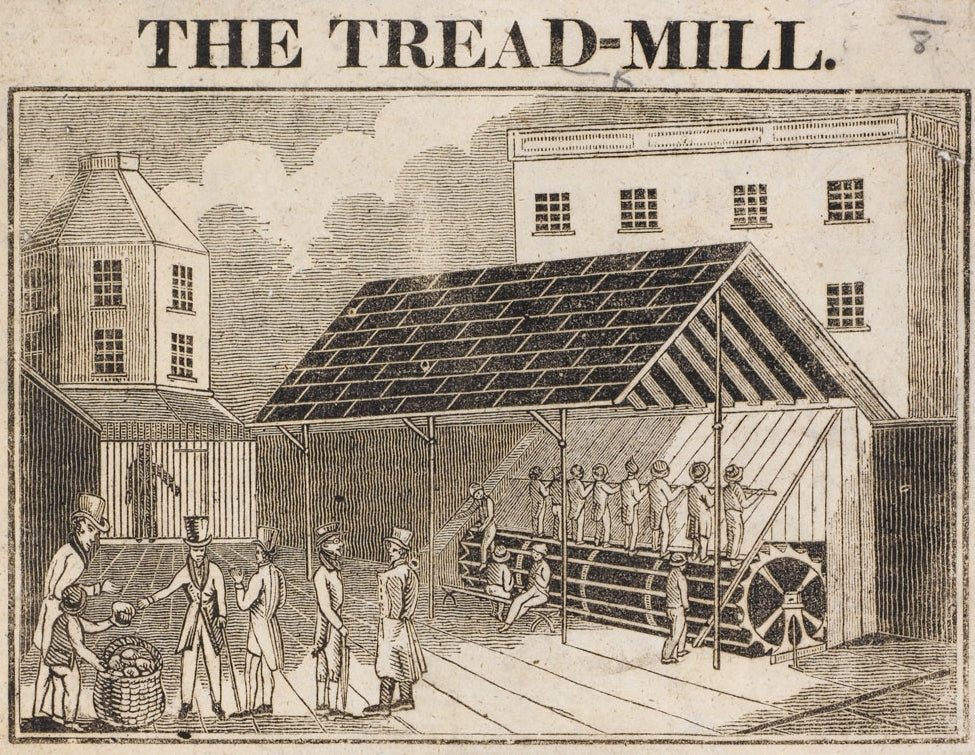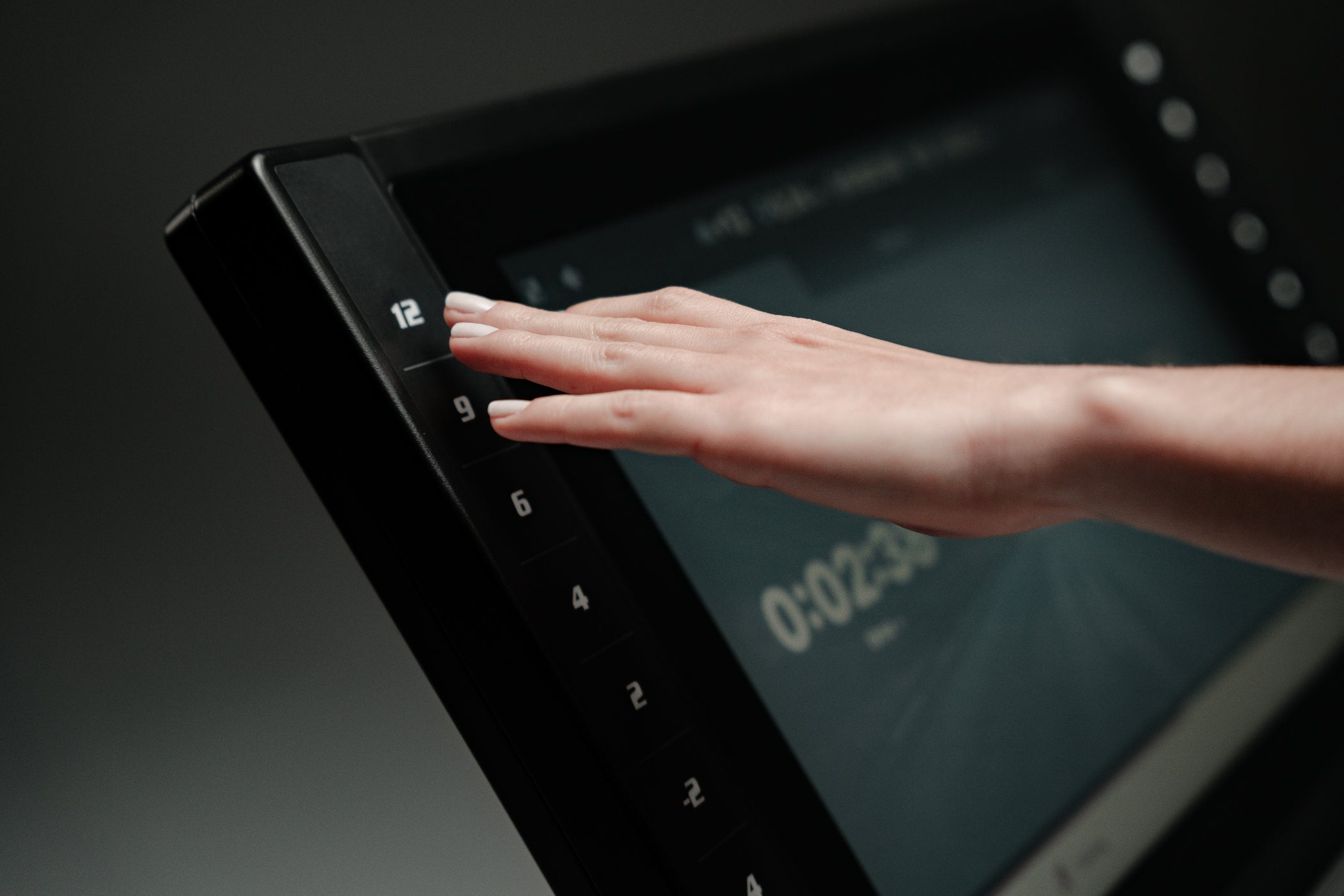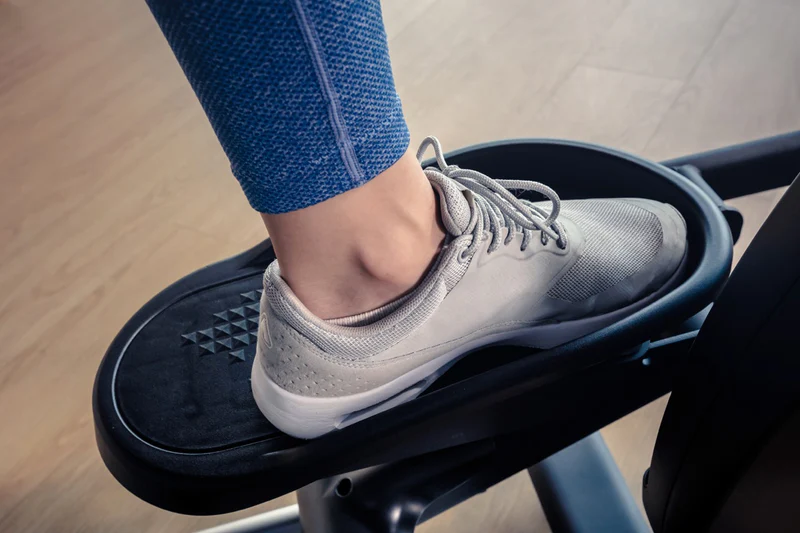Key Takeaways
- The treadmill was originally invented as a punishment device for prisoners in the early 19th century.
- Sir William Cubitt developed the first treadmill in 1818, called the "tread-wheel".
- Prison treadmills were used to perform hard labor, such as grinding grain or pumping water.
- Over time, treadmills evolved from penal devices to medical diagnostic tools and fitness equipment.
- Modern treadmills like those by SOLE feature advanced technology like heart rate monitors and interactive screens.
|
At SOLE Fitness, we're proud to offer the best treadmills for your home or gym. These machines are crafted to meet the highest standards of quality and performance, ensuring they are ideal for anyone - from fitness novices to seasoned athletes. Featured Product SOLE Treadmills: Starting at $1,199.99, SOLE treadmills excel in ergonomic design, durability, and value. Equipped with advanced cushioning to minimize joint impact, powerful, quiet motors, and wide running surfaces, they suit any fitness level. |
Introduction to the Treadmill's Origins
When we think of treadmills today, we often picture them as essential equipment in gyms or convenient machines for home workouts. However, the origins of the treadmill are far removed from fitness and health. The treadmill's history dates back to the early 19th century when it was invented for a completely different purpose - punishment.
The treadmill was first conceptualized and built by Sir William Cubitt in 1818. Unlike today's treadmills, which are designed to improve health and fitness, Cubitt's invention was a tool for penal labor.
Ancient Engineering: The Roman Treadwheel
Role in Construction
The Roman treadwheel, or "polyspaston," played a crucial role in ancient construction projects. This human-powered device was essentially a large wheel attached to a crane, used to lift heavy materials. Workers would walk inside the wheel, causing it to rotate and lift objects.
 Reconstruction of a Roman treadwheel crane, the Polyspaston, in Bonn, Germany (image courtesy of Wikipedia).
Reconstruction of a Roman treadwheel crane, the Polyspaston, in Bonn, Germany (image courtesy of Wikipedia).
Design and Functionality
The Roman treadwheel consisted of a large wooden wheel with steps inside - so workers could walk and generate power. The wheel was connected to a crane, which lifted heavy materials as the wheel turned. This mechanism enabled the construction of monumental structures that would have been impossible to build using manual labor alone.
Influence on Future Inventions
The Roman treadwheel's innovative design influenced future inventions, including the 19th-century prison treadmill. The concept of using human power to generate mechanical energy was adapted and refined over the centuries - which led to the development of various devices for industrial and agricultural purposes.
The 19th Century Prison Treadmill
Reasons for Its Introduction
The introduction of the treadmill in 19th-century prisons was driven by economic and social factors. Following the Napoleonic Wars, England faced high unemployment rates and an increase in crime - overcrowded prisons became a pressing issue, and authorities sought ways to reform prisoners while addressing the labor shortage.
Sir William Cubitt's treadmill provided a solution to these problems - and aimed to instill discipline and work ethic. The power generated by the treadmill could be used for industrial tasks, benefiting both the prison and the surrounding community.
Design and Mechanism
The 19th-century prison treadmill consisted of a large rotating cylinder with steps attached to it. Prisoners would walk on the steps, causing the cylinder to turn. This rotation was connected to machinery that could grind grain or pump water.
The treadmill's mechanism required prisoners to exert significant physical effort - and the repetitive nature of the task made it a grueling and monotonous form of punishment.

Life for Prisoners Using the Treadmill
Prisoners using the treadmill were required to walk on the rotating steps for hours, often in difficult conditions. The physical exertion and monotony of the task took a toll on their bodies and minds.
Prisoners were often subjected to the treadmill as a form of punishment for specific offenses - the experience was grueling, and many inmates found it demoralizing. Despite its intended purpose of reform, the treadmill often left prisoners physically and mentally exhausted.
Early Agricultural and Industrial Uses
Power Generation in Mills
While the primary use of the treadmill in the 19th century was for penal labor, it also found applications in agriculture and industry. The treadmill's ability to generate power made it a valuable tool for various tasks.
One of the most common uses of the treadmill in agriculture was to power mills. The treadmill's rotating mechanism could be connected to millstones - which allowed farmers to grind grain efficiently, and was particularly useful in rural areas where access to other forms of power was limited.
Treadmills were also used to pump water from wells or rivers to irrigate their fields.
Use in Farming and Agriculture
Apart from powering mills and pumping water, treadmills found various other applications in agriculture - they were used to operate butter churns, grindstones, and fanning mills.

The versatility of the treadmill allowed farmers to perform labor-intensive tasks more efficiently, saving time and effort. This early adoption of the treadmill in agriculture set the stage for its eventual evolution into a fitness device.
Other Industrial Applications
Beyond agriculture, treadmills were also utilized in various industrial applications. They powered machinery in factories, providing a reliable source of energy for repetitive tasks - which made the treadmill an essential tool in the early industrial era.
Evolution to Medical and Fitness Applications
Medical Innovations During the 20th Century
The transition of the treadmill from a penal and agricultural device to a medical and fitness tool began in the mid-20th century. Advances in medical science and a growing interest in health and fitness paved the way for this transformation.
One of the key figures in this evolution was Dr. Robert A. Bruce, a cardiologist who developed the first motorized treadmill for medical diagnostics in 1952. Dr. Bruce's treadmill allowed doctors to perform controlled cardiovascular stress tests, revolutionizing the field of cardiology.
 Dr. Robert A. Bruce with a patient on a treadmill (image courtesy of Kingsbox).
Dr. Robert A. Bruce with a patient on a treadmill (image courtesy of Kingsbox).
The treadmill's ability to simulate walking and running made it an ideal tool for physical therapy and rehabilitation. Patients recovering from injuries or surgeries could use the treadmill to regain strength and mobility under controlled conditions.
This medical application of the treadmill laid the foundation for its adoption in the fitness industry. As people became more aware of the importance of cardiovascular health, the treadmill became a popular exercise tool for home and gym use.
Development of Home Fitness Equipment
By the late 1960s, the treadmill had made its way into the consumer market. The introduction of the PaceMaster 600, the first mass-produced home treadmill, forever changed the fitness industry. This model made it possible for individuals to exercise from the comfort of their homes - and made fitness more accessible to the general public.
 The PaceMaster 600 (image courtesy of HFE)
The PaceMaster 600 (image courtesy of HFE)
The convenience of home treadmills encouraged a culture of home workouts. People no longer needed to visit gyms to stay fit; they could now achieve their fitness goals at home, regardless of weather conditions. The popularity of home treadmills grew rapidly, and they soon became a staple in home gyms and fitness centers.
Technological Enhancements
Modern treadmills come equipped with advanced features such as heart rate monitors, interactive screens, and connectivity with fitness apps - all of which have made workouts more engaging and personalized.
For instance, the SOLE F85 treadmill has a powerful 4.0HP motor, a 15.6" touchscreen display, 15 incline levels, 6 decline levels, and Bluetooth connectivity. Users can monitor their heart rate, access virtual training programs, and sync their workout data with fitness apps.
Final Thoughts on the Treadmill's Journey
Originally designed to punish and reform prisoners, the treadmill has evolved into a versatile tool that promotes health and wellness. Its transformation also reflects broader changes in societal attitudes towards exercise, health, and technology.
Today, treadmills are an integral part of gyms, fitness centers, and home workouts because they are a convenient and effective way to perform cardiovascular exercises.
Frequently Asked Questions (FAQ)
What was the original purpose of the treadmill?
The treadmill was originally invented as a punishment device for prisoners in the early 19th century. Sir William Cubitt developed the first treadmill in 1818, called the "tread-wheel." It was used to force prisoners to perform hard labor, such as grinding grain or pumping water.
How did the treadmill evolve from punishment to fitness equipment?
The transition of the treadmill from a penal device to a fitness tool began in the mid-20th century. The development of motorized treadmills for medical diagnostics by Dr. Robert A. Bruce in 1952 marked a significant turning point - which led to the treadmill's widespread use in healthcare and fitness.
What were the main uses of the treadmill in ancient Rome?
In ancient Rome, the treadmill, or "polyspaston," was used primarily in construction projects. It was a human-powered device that lifted heavy materials - used for building structures like aqueducts and temples.
When did treadmills become popular for home use?
Treadmills became popular for home use in the late 1960s with the introduction of the PaceMaster 600, the first mass-produced home treadmill. This model made fitness more accessible to the general public, encouraging a culture of home workouts.
Blog featured image credit: William Cubitt via Wikipedia




Leave a comment
This site is protected by hCaptcha and the hCaptcha Privacy Policy and Terms of Service apply.